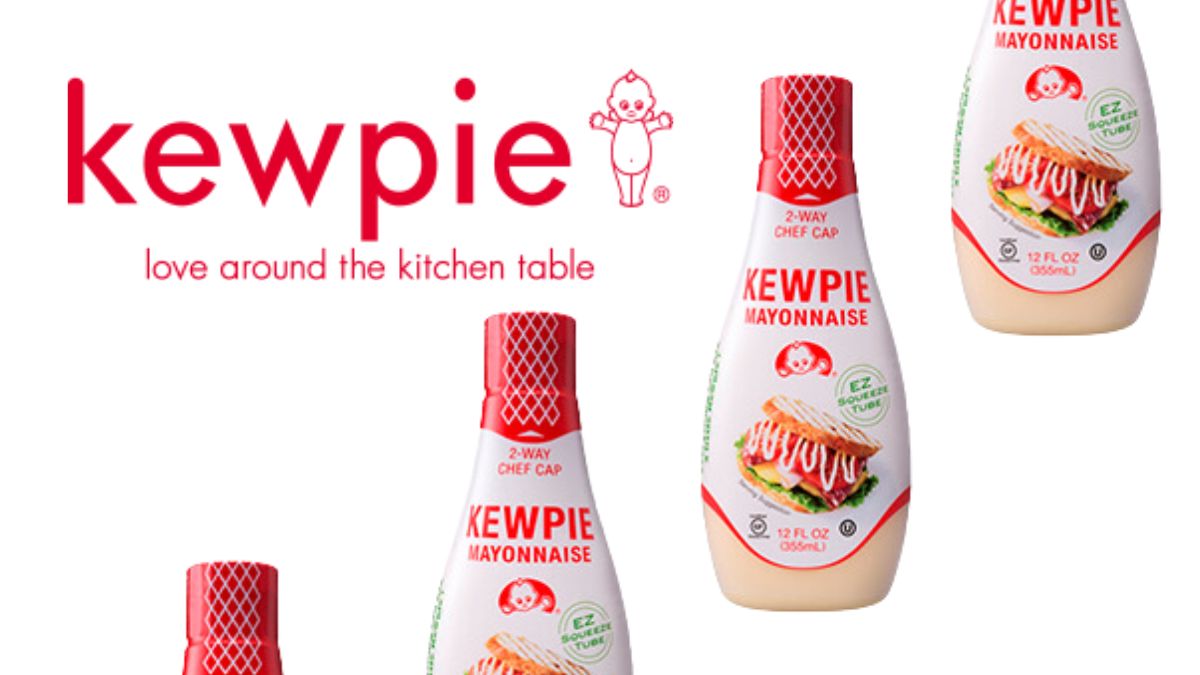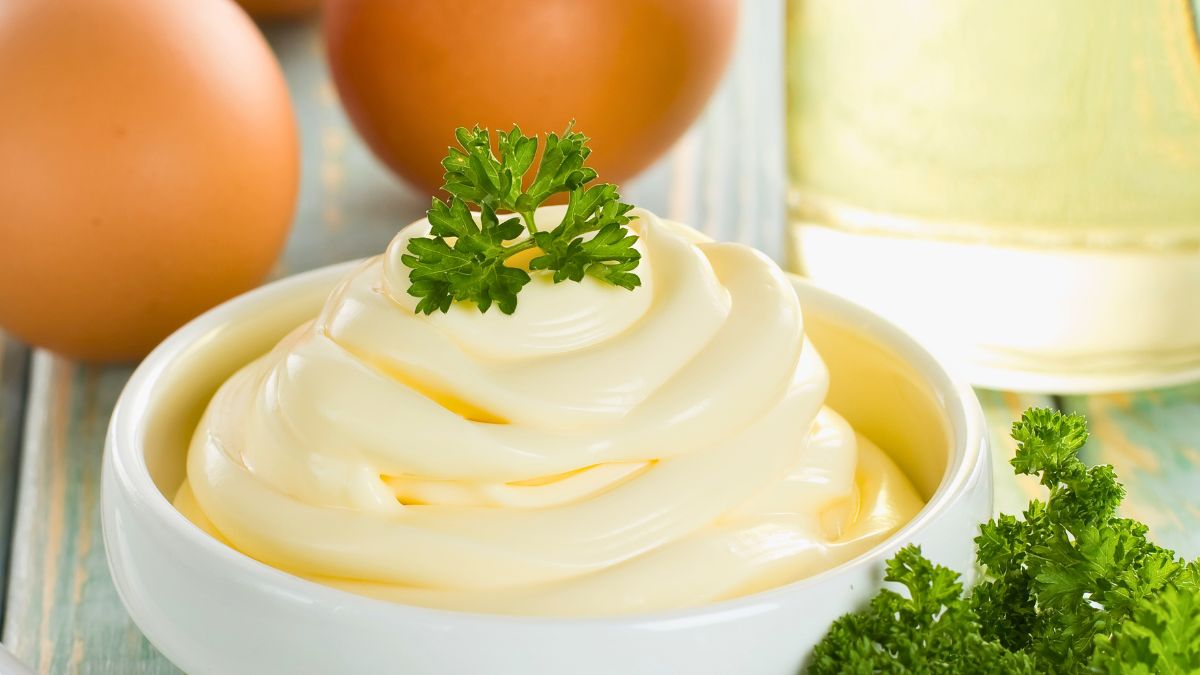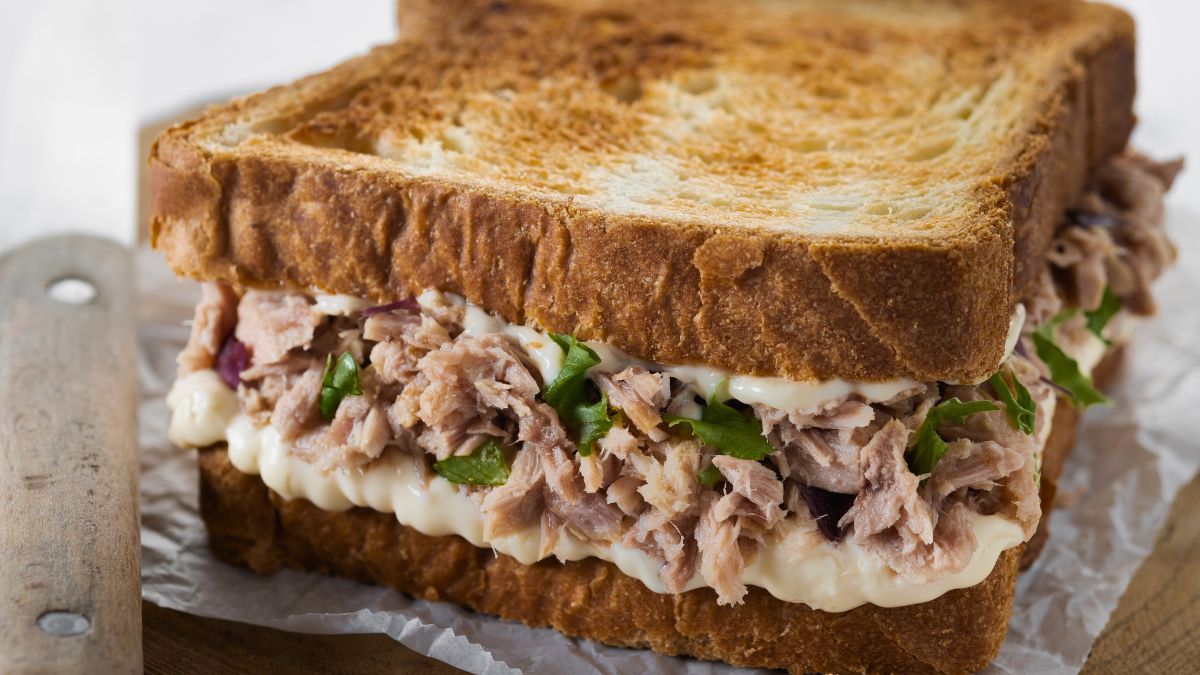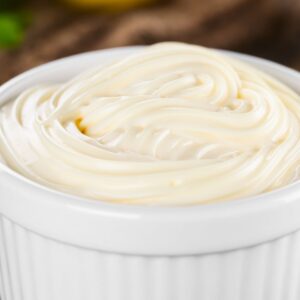What Does Kewpie Mayo Taste Like & Other Untold Truths

Although it has been around for quite some time, Kewpie mayo is still somewhat of a mystery. It isn’t new to me, but then again, my job is to know food. Still, I’ve had surprising discussions where I’ve discovered that not many people know much about this mayo, and some haven’t even tried it, though they know of it. So, what does Kewpie mayo taste like?
Kewpie mayo is a Japanese-origin mayonnaise made of egg yolks as the main ingredient. It has a very distinct taste, very different from the Western-style mayo, with a noticeable tang and pronounced umami flavor. While the Asian Kewpie versions are lighter, the Western is thicker.
There are many mysteries revolving around this type of mayo, starting with who’s the baby on the package and more. Being the food enthusiast that I am, I felt compelled to write an article about it and clear the air. This is why, in the following paragraphs, you can find out the untold truth about Kewpie mayo!
What Is Kewpie Mayo?

Kewpie mayo is actually a Japanese mayonnaise brand, and not only that, but the best-selling Japanese mayonnaise brand. It originated in Japan in 1925 and was introduced on the market by the QP Corporation, named after the famous Kewpie doll character, which is also on the packaging.
For context, the Kewpie doll is a novelty carnival doll from the 1900s. Rosie O’Neill, an American cartoonist and writer, invented the Kewpie doll. So, the baby on the package isn’t a baby, but the doll it was named after.
What makes it original and different than Western-style mayonnaise is its unique recipe and the ingredients used to make it. While Western-style mayonnaise is gentler-flavored, adding more texture than taste, Kewpie is sharper and has a more pronounced flavor.
Basically, it’s an Asian twist on a European-origin condiment. It respects the original makings of the product, but it also includes the Asian, particularly Japanese, customs and flavor. So, instead of using distilled vinegar, Kewpie mayo includes rice vinegar, which gives it a slightly sweet tanginess.
Additionally, it relies on egg yolks as its primary emulsifier, resulting in a creamier and smoother texture than mayonnaise made with whole eggs. Although egg yolks are the primary emulsifier in mayonnaise, in general, some Western-style brands also use oil to tie the ingredients.
I am a big fan of this condiment, especially because of the expressive umami note. Compared to Western-style mayo, I would say that it is richer in some aspects, while in others, regular mayo wins. The pronounced umami note makes Kewpie mayo a great ingredient to combine with many dishes, giving more flavor to the food.
Still, it doesn’t capture the gentility and softness of traditional mayo since it is generally shaper.
Kewpie is no longer only a Japanese brand but a worldwide known condiment. Over the years, it has gained popularity and is a beloved household product globally. It has local variations tailored to the preferences of the local people, which is why it tastes slightly different depending on the country.
What Is Kewpie Mayo Made of, and What Does It Taste Like?

This is a beloved condiment with almost a century-long tradition. It is an ingenious Japanese invention, where they took the traditional European mayonnaise and gave it a classic Asian spin.
Instead of the traditional ingredients, Kewpie mayo contains traditional ingredients from the Eastern, particularly Japanese cuisine.
So, instead of seed oil, it uses soybean oil. Soybean oil serves as the base of this mayo and gives it the creamy texture typical for mayonnaise.
Another thing the Japanese did differently was using egg yolks to emulsify the mayo. While egg yolks are commonly used as a mayo emulsifier, Western-style mayo often uses whole eggs for this purpose. Honestly, I can’t say that using egg yolks is what sets Kewpie mayo apart, but it is definitely something that people know it for.
Instead of regular vinegar, Kewpie is made with rice vinegar, which I think is the key ingredient. While soybean oil is also a unique trait, it doesn’t impart much flavor. On the other hand, rice vinegar gives it plenty of taste, and I’d say that it is one of the ingredients providing the expressive umami note.
Unlike Western-style mayo, this one is expressively salty. Western-style mayo obviously contains salt, but Kewpie contains more, which further contributes to its umami flavor.
Monosodium Glutamate (MSG) is the key player. This mayo includes MSG, which shapes its distinct umami flavor. MSG is a common seasoning in Japanese cuisine and is the main culprit for the distinct umami notes.
As a result of the ingredient combination, it has a rich and creamy texture, which I find more substantial than regular mayo. It is mildly sweet due to the use of rice instead of distilled vinegar, which also contributes to the umami note.
The MSG and salt create the tanginess of the condiment, as well as its distinct and recognizable umami flavor.
Does Kewpie Mayo Have Dairy?
No, it does not contain dairy and is dairy-free mayonnaise. Dairy isn’t a part of any mayonnaise.
The main ingredients in Kewpie mayo are soybean oil, egg yolks, rice vinegar, salt, and monosodium glutamate (MSG).
What Makes Kewpie Mayo Different?
This type of mayo has several traits that set it apart from others. First and foremost, it has a Japanese origin, which then sparks the further original markings of this mayo. As I said, it is an original twist of a known condiment.
It uses the same ingredients that Western-style mayonnaise includes in the recipe: oil, vinegar, egg yolks, and salt. Still, it masterfully incorporates the Japanese versions of these ingredients, which results in an original product.
While using egg yolks as an emulsifier isn’t a novelty in mayonnaise making, it is still worth mentioning since some common Western-style mayonnaise brands use a whole egg. Egg yolks make Kewpie mayo richer and creamier compared to mayo types that use a whole egg. This is because the white gives it a fluffy note, while the yolks create a denser and creamier result.
The use of MSG is definitely a unique trait of this creamy sauce and not something we commonly see in Western-style mayonnaise. This ingredient gives it its signature umami flavor.
Even though all mayo types include a sweet note, Kewpie mayo’s sweet note seems to be more pronounced. While it isn’t the leading taste note, it is still quite noticeable, further intensifying the umami.
How to Use Kewpie Mayo?

Although different than Western-style mayo, you can use it the same way. It’s a very versatile condiment that allows many pairing possibilities. My personal favorite is Kewpie-topped eggs sprinkled with curry powder.
You can use Kewpie mayo as a dipping sauce, whether alone or mixed with other ingredients. It is great for fries, chicken wings, chicken fingers, veggies, chips, and even roast.
It goes without saying that you can use Kewpie mayo with Asian food, especially Japanese cuisine. So, if you are in the mood for sushi or sashimi, don’t think twice before enhancing them with this delicious sauce!
Sandwiches, wraps, and omelets are all excellent places to use it, so don’t hesitate to add umami to your breakfast or snack.
Moreover, it goes great with salads, particularly coleslaw, lettuce, cabbage, or carrot-based salads. I like it with Caesar salad and also tuna or chicken salad. Add it to baked veggies, grilled meats, or anywhere you think it would go.
How to Make Kewpie Mayo with Regular Mayo?
Did you know that you can make Kewpie using the regular mayo? It won’t be an entirely identical version, but you will get a pretty close replica of the real thing. You’ll need some of the ingredients used in Kewpie, i.e., rice vinegar, MSG, and some mustard.
First, scoop as much as you plan on eating from your regular mayo. Add 1 tablespoon of rice vinegar, less than a pinch of MSG, a pinch of sugar, and a quarter tablespoon of mustard; if you add more mayo, increase the additional ingredients accordingly.
Note that you can make this twist if your regular mayo is made of yolks instead of whole eggs. I mean, you can try it with a whole egg mayo, too, but it doesn’t work all that well.
Mix well and enjoy!
What to Use Instead of Kewpie Mayo?
The first and best substitute for Kewpie mayo is regular mayo. Whether you are bothered by the heaviness of the egg yolks or the pronounced umami flavor, regular mayo is the way to go. You can use it in exactly the same ways as you would do with Kewpie mayo.
Egg yolk-based mayo is another excellent substitute for Kewpie mayo since it has the richness of egg yolks without the umami.
Homemade mayo is probably what I would do. You can customize the flavor to your liking, use whatever ingredients you prefer, and keep or eliminate any Kewpie mayo traits according to your taste.
If you are following a vegan diet and need to avoid the yolks but would still like to taste the umami, select a vegan mayo and perhaps tailor it to your liking by adding MSG or rice vinegar.
If you like the tang and the umami but want to avoid the yolks, try substituting Kewpie mayo with Greek yogurt. You’ll still enjoy the flavors you like without tolerating the yolk heaviness that some find overwhelming.
If you are after the umami and tang and don’t mind a bit of bitterness, go for mustard. It is also a great solution for a vegan diet, and it mixes excellently with vegan mayo.
Finally, let me just say that you can’t use a single substitute to replace all aspects of Kewpie mayo. This is why you need to think about what you like about it the most first, and only then make a decision.
Do you have a creative way of using and substituting Kewpie mayo in your recipes? I would love to hear from you in the comments below!

Kewpie Mayo with Regular Mayo
Ingredients
- 1 cup regular mayonnaise
- 1 tbsp rice vinegar
- ⅛ tsp MSG
- a pinch of sugar
- 1/4 tbsp mustard
Instructions
- Mix all the ingredients together and refrigerate.
- That's it! Serve and enjoy!
